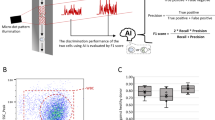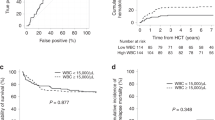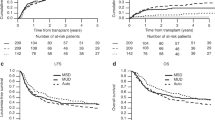Abstract
Summary: Leukocytes were obtained from 14 healthy subjects, one patient with the infantile form, two patients with the adult variant of acid maltase deficiency, two patients with chronic myelocytic leukemia, two patients with acute myeloid leukemia, and two patients with chronic lymphotic leukemia. In addition, lymphocytes were prepared from three normal subjects, and five established lymphoid lines were used.
Cells were extracted either with Triton 0, 2%, or with water followed by 0.2% Triton. α-Glucosidase activity was measured in water homogenates, water extracts after centrifugation, and Triton extracts, with or without antisera directed against acid maltase (EC 3.2.1.3) and renal maltase (EC 3.2.1.20). The percentage of acid and renal maltases was then calculated in each soluble fraction.
Normal whole leukocytes (mostly granulocytes) contain both acid and "renal" maltases, whereas normal lymphocytes contain very little or no "renal maltase." This isozyme is present in chronic myelocytic leukemia, but is absent in acute myeloid and chronic lymphocytic leukemia as well as in established lymphoid lines.
Acid maltase is almost completely extracted with water, whereas renal maltase is extracted only with Triton. From the results, it appears that for the diagnosis of alpha glucosidase deficiency, cells should be extracted in water and centrifuged before determination.
Lymphocytes, which are devoid of renal maltase, are a better diagnostic material than are granulocytes.
Speculation: A specific isozyme of α-glucosidase, renal maltase, is found in the organism only in kidneys and white blood cells, whereas all other tested organs, including fibroblasts and cultured amniotic cells, do not possess this isozyme (unpublished results). Because its extractability differs from that of acid maltase, this property can be taken advantage of in activity determinations. The "renal" isozyme is still present in leukemic myelocytes, but not in myeloblasts. It seems, therefore, to be absent in young cells as well as in all cells of lymphocytic origin.
Similar content being viewed by others
Log in or create a free account to read this content
Gain free access to this article, as well as selected content from this journal and more on nature.com
or
Author information
Authors and Affiliations
Rights and permissions
About this article
Cite this article
Dreyfus, J., Poenaru, L. White Blood Cells and the Diagnosis of α-Glucosidase Deficiency. Pediatr Res 14, 342–344 (1980). https://doi.org/10.1203/00006450-198004000-00017
Issue date:
DOI: https://doi.org/10.1203/00006450-198004000-00017
Keywords
This article is cited by
-
Diagnostic efficacy of the fluorometric determination of enzyme activity for Pompe disease from dried blood specimens compared with lymphocytes—possibility for newborn screening
Journal of Inherited Metabolic Disease (2010)
-
Tris discriminates between the different α‐glucosidase activities from extracts of human neutrophils
Journal of Inherited Metabolic Disease (1992)
-
Myopathies due to enzyme deficiencies
Journal of Neurology (1985)
-
A new variant form of hepatic glycogenosis with acid maltase deficiency
Japanese journal of human genetics (1984)



